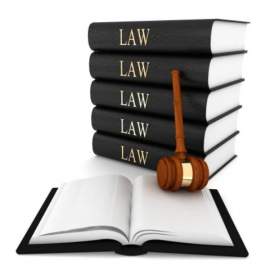
A Full Guide to Negligence

Must Read
History:
Negligence used to be a much broader term that referred to any sort of breach of the peace, but has evolved over time to become a separate entity from intentional torts as well as strict liability torts. The concept first appeared in regards to professional community members, such as doctors or blacksmiths, who possessed a certain duty to the community to provide honest service. If this duty was breached, the individual was guilty of negligence.
Early lawmakers were primarily considered with those wrongdoers who acted in an intentional way to disturb the peace, and were less concerned with those who failed to act. Because of this, negligence law developed relatively slowly and was based on injuries that were considered to be due to indirect causes. During the Industrial Revolution, negligence became a huge part of the legal system due to the introduction of machinery into daily life. There were many cases involving accidental injury that were attributed to negligence. Contact a negligence lawyer to acquire legal advice and assistance.
Unavoidable Accident:
An unavoidable accident occurs when, despite all exercise of reasonable care, the defendant could not have foreseen or possibly avoided the resulting harm to the plaintiff. In order for an accident to be unavoidable, the situation must in no way be caused by or added to by the defendant.
Unless some evidence can be found that proves the defendant should have reasonably been aware that this accident would occur, he is not liable for the plaintiff's injuries. It must be proven that there was no wrongful intent on behalf of the defendant. This is only used in unique instances where the circumstances of the case prove that the plaintiff's injuries were absolutely unavoidable.
Elements of Cause of Action:
There are certain elements that are required to prove that a defendant acted negligently. There is a specific code of conduct which all people are expected to follow and there is a duty of the public to act in a certain way which reduces the risk of harm to others.
Negligence can only be claimed by an injured plaintiff whose interests have actually been interfered with, meaning that a plaintiff must prove his injuries, and prove that they were caused by the defendant. This proximate cause is the link between the defendant's actions and the plaintiff's injuries. There is a statute of limitations in negligence cases. However there are several rules, such as discovery and continuing negligence, which may excuse a plaintiff from the statute of limitations.
Unreasonable Risk:
Risk is a major factor when deciding negligence liability.
In order for a defendant to be held liable for negligence, the plaintiff must show that the defendant's actions were characterized by an unreasonable amount of risk to the plaintiff's safety. This sometimes arises in cases where an object was left lying around by the defendant and picked up by the plaintiff.
In these cases, negligence liability is determined by the amount of risk presented by the object. A shot gun, for example, presents unreasonable risk. In determining whether the amount of risk exhibited by the defendant is considered unreasonable, it is measured against what a reasonable person would have done. If a reasonable person in a similar situation would have recognized this risk as greater than most and taken action to prevent this risk, then it is considered gross negligence.
The Reasonable Person:
Negligence law is based on how a reasonable person in the defendant's situation would have acted. A person's age, physical, and mental characteristics are take into account. If a person has a disability for example, he will be held to the standard of how another person with this same disability would act.
The circumstances of a case of an important part in determining negligence. In the event of an emergency, the reasonable person standard is altered to include the way a reasonable person would act in that emergency situation. In negligence law it is held that a reasonable person should be able to determine the amount of risk associated with an activity, take necessary precautions, and be able to some degree to anticipate the conduct of others.
Application of the Standard:
In negligence cases, the standard of care refers to the amount of precaution and diligence taken by the individual who duty it is to provide care to the plaintiff. The general public is held to the reasonable person standard, while professionals are held to the professional standard of care.
This means that they must act with the same amount of prudence that a professional in the same area of work would exercise. This is especially important in cases of medical negligence in which medical professionals are held to a medical standard of care that provides the appropriate treatment guidelines for a patient with a specific illness or condition
Degrees of Care- Aggravated Negligence:
The amount of risk associated with a defendant's actions correlate to the amount of precautions that he should take to reduce harm to others. The degree of care taken corresponds to the degree of negligence that a defendant may be charged with. There are generally three degrees of negligence: slight negligence, gross negligence, and reckless negligence.
Slight negligence is found in cases where a defendant is required to exercise such a high degree of care, that even a slight breach of this care will result in liability. Gross negligence includes a more severe lack of care than ordinary negligence, but not that of blatantly disregarding the law. Reckless negligence is the willful disregard for the safety of others where the defendant's unreasonably risky actions will almost definitely result in injury.
Rules of Law:
Modern common law is built on a system of precedence. When a court makes a ruling, subsequent cases with the same or similar circumstances will be judged in the same way. If a court finds a defendant guilty of negligence, all other similar cases will also result in negligence.
However, because negligence law is based on the moral attitude of a society and the behavior of people, which is subject to change over time, precedents are not always effective in negligence law. Situations can greatly affect a person's actions, and situations are, for the most part, always different. Therefore, the rules of law can only be applied in negligence cases when the case is characteristic of a typical situation.
Violation of statute:
Some negligence cases are left to the discretion of the judge or jury, while other cases are based on violation of statute. Failure to abide by the code of conduct established by legislature may result in the defendant being liable for harm to the plaintiff caused by negligence.
In order for this to occur, the defendant must be found to have violated some specific statute, the plaintiff must be within the class of persons the statute is meant to protect, and the result of the defendant's actions must be the type of accident that the statute is designed to prevent.
It must be shown by the plaintiff that he did not contribute in any way to the defendant's violation of statute. However, some courts may still permit the plaintiff to collect damages even if the plaintiff himself is also guilty of some tortious act.
NEXT: A Full Guide to Negligence





















